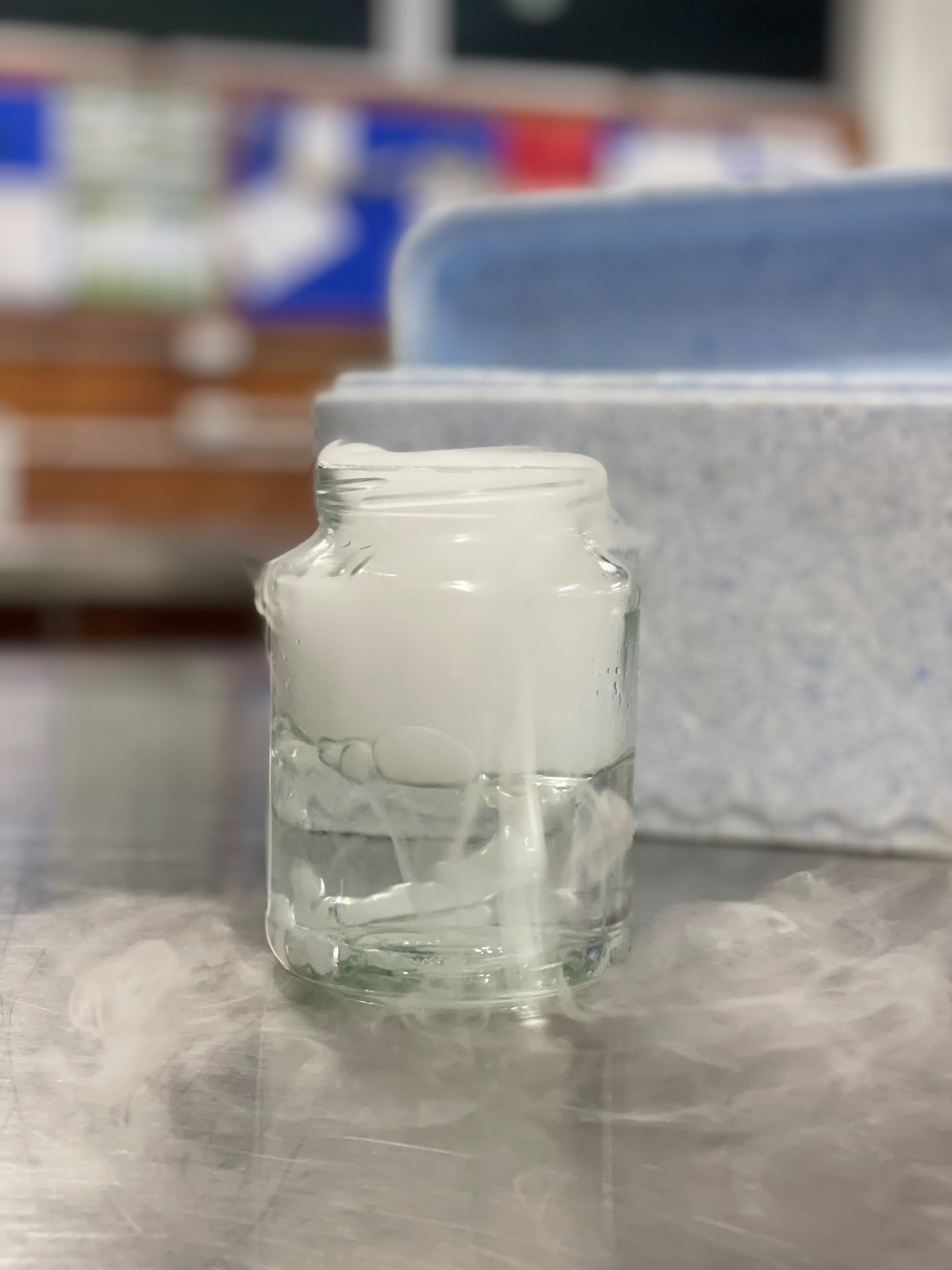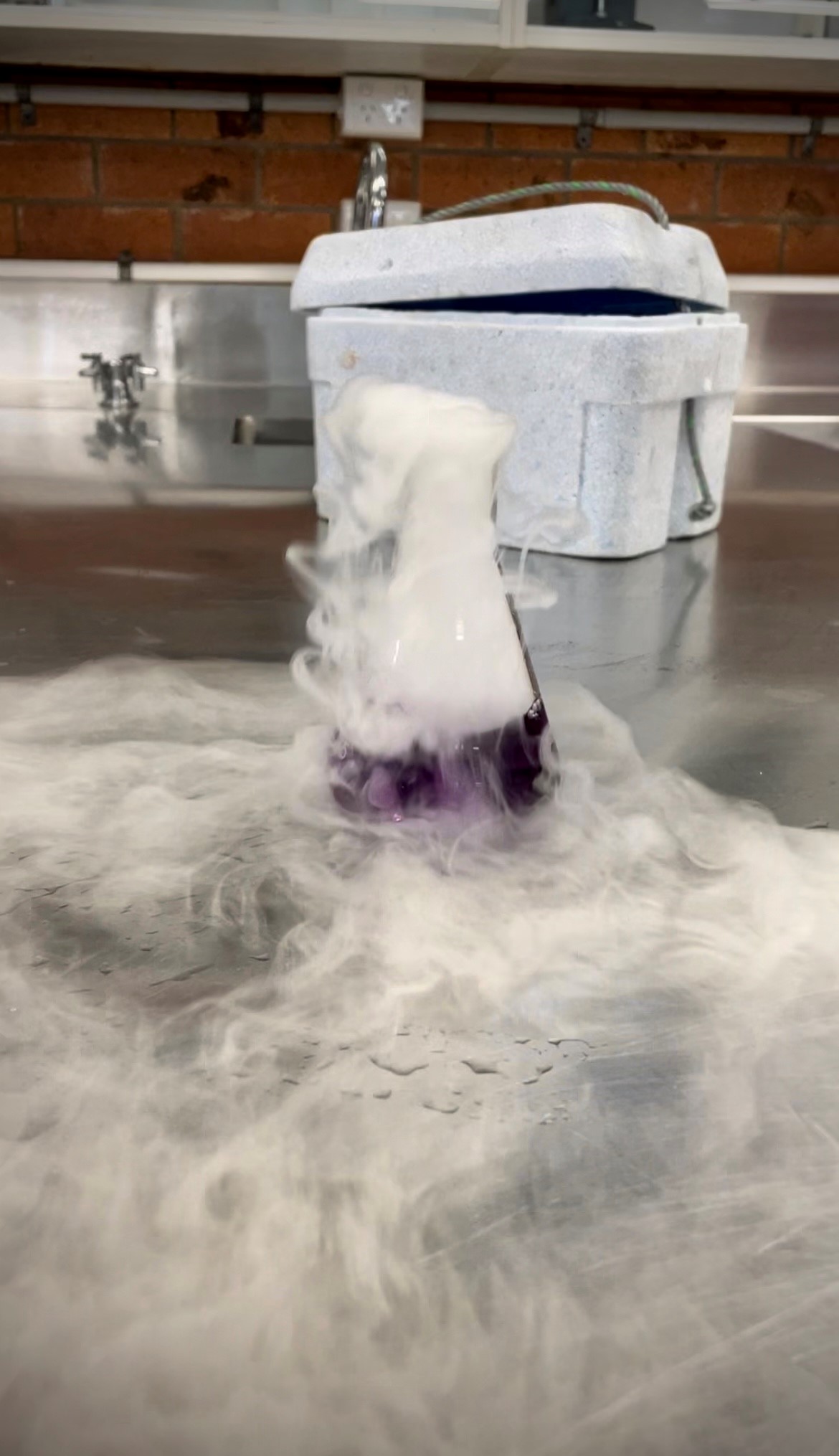Science Week
Day 5: That’s a wrap on Science Week. The seniors decided to show off “the whoosh bottle” for the juniors as a fun way to end the week. I would just like to take a moment now to thank everyone who was involved, this couldn’t have happened without a great support team in the science department and the seniors who gave up their lunch times this week.
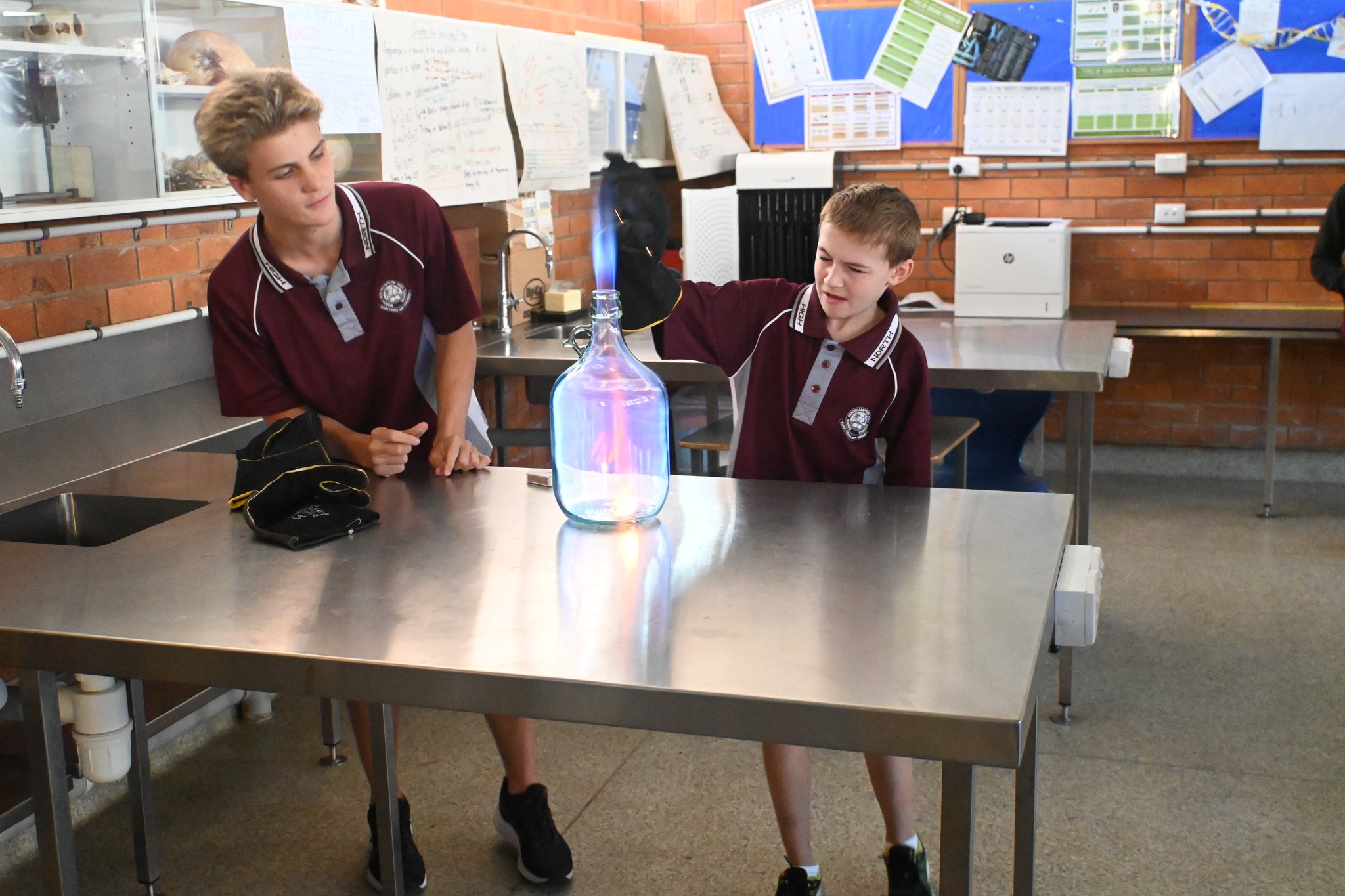
Day 4: Science week is almost over, today the seniors helped the juniors convert a mineral ore into a precious metal using REDOX reactions. Stay tuned for the grand finale tomorrow with an experiment that has already ended up on the schools Facebook page before, can you guess what the students will be doing?
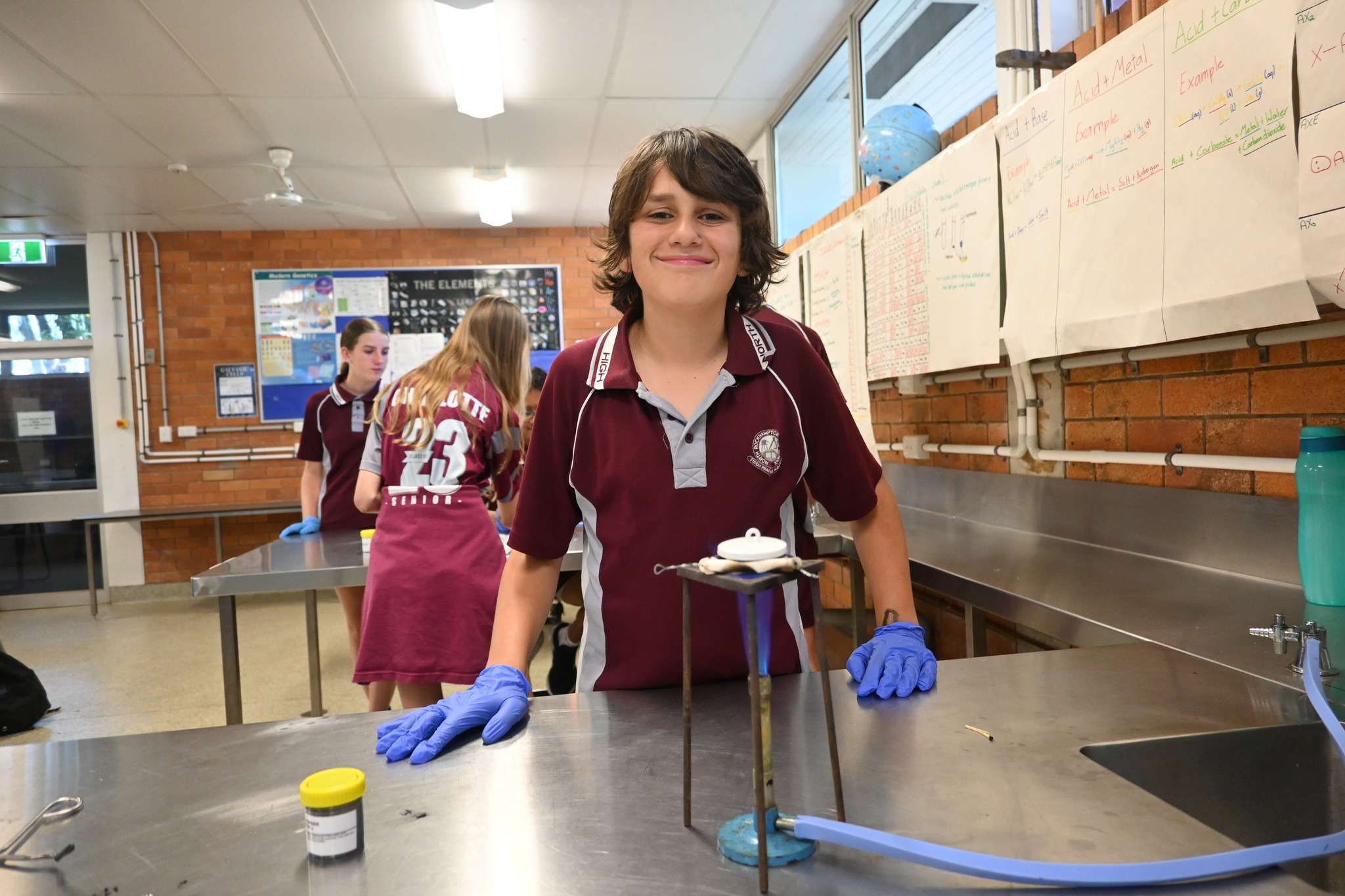
Day 3: Science
week is now in full swing. Today was precipitation reactions. Tomorrow we will
use the products of this reaction to demonstrate reduction and oxidation
reactions.

Day 2: Today the seniors helped the juniors explore how metals in solution can change the colour of a flame. The juniors had a great time seeing all the possible colours and combinations, and the seniors enjoyed sharing their knowledge. Looking forward to working with precipitation reactions tomorrow. Day 1: Science
week has started, here the senior students demonstrate how to inflate a balloon
with CO2 using their knowledge of acids and carbonates. This was a
fun and simple way to start science week, keep your eyes peeled for what
happens tomorrow.
Day 1: Science
week has started, here the senior students demonstrate how to inflate a balloon
with CO2 using their knowledge of acids and carbonates. This was a
fun and simple way to start science week, keep your eyes peeled for what
happens tomorrow.

Experiments
What
you just observed here was the combustion of bottle full of ethanol vapour.
This is often used as a demonstration of how rates of reactions can be
increased when utilising knowledge surrounding particle theory. Allowing the
fuel and oxygen to mix in the gaseous phase allows for the reaction to occur at
a much higher rate than otherwise possible, causing this fantastic effect
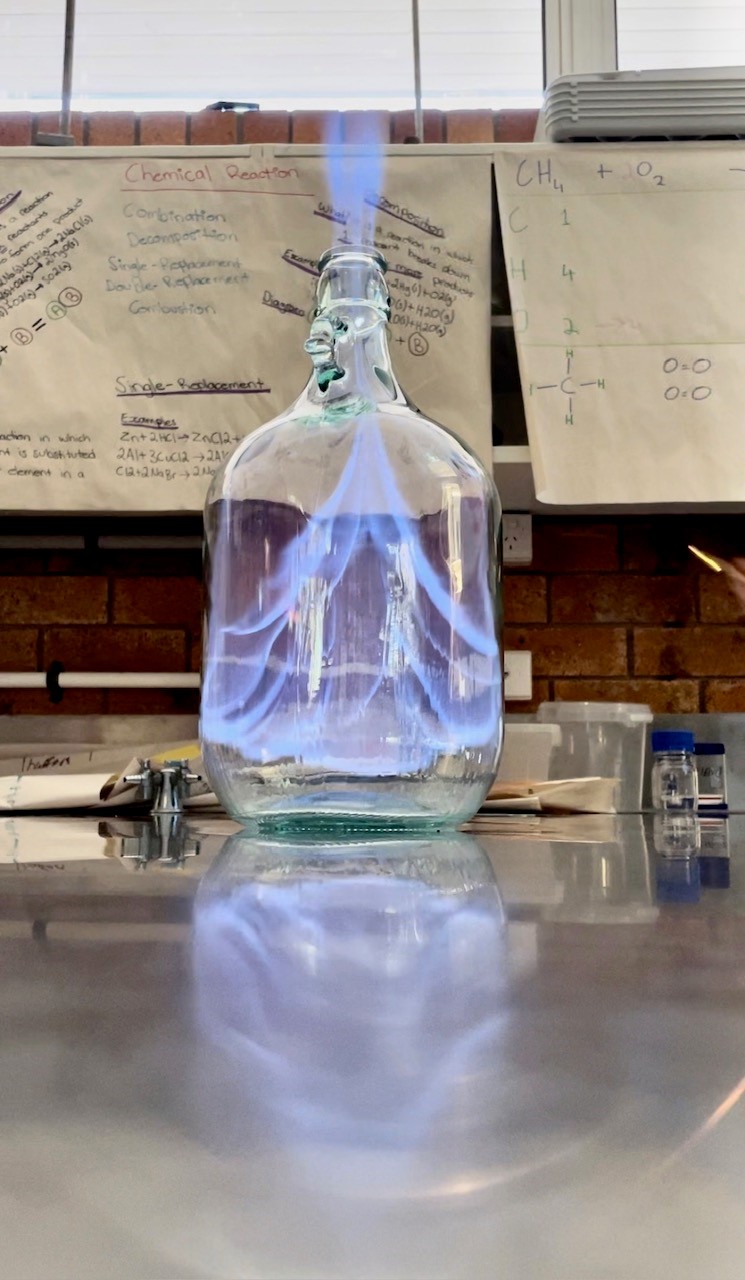
Year 12 students experimented with CO2 and how it can acidify a solution. When the container was purple it had a basic solution of sodium hydroxide, pH 14. As the dry ice was releasing CO2 into the solution it was forming carbonic acid. This drove the pH down towards 1 causing the universal indicator to change colours as the pH decreased. Visit our Facebook page for the full video.
